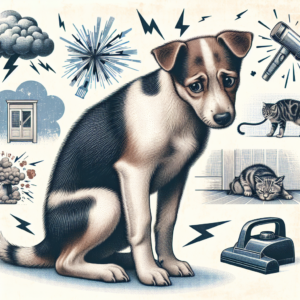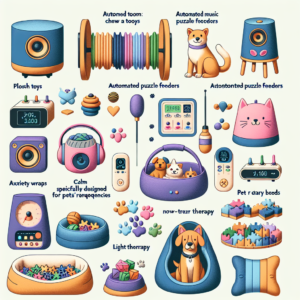- Key Takeaways
- Early Signs Your Cat May Have Dental Issues
- The Science Behind Wearables for Dental Monitoring
- Exploring the Types of Dental Health Wearables for Cats
- Benefits of Using Dental Health Wearables
- How to Introduce Dental Health Wearables to Your Senior Cat
- Create a Dental Health Plan with Wearable Data
- Frequently Asked Questions (FAQ)

Key Takeaways
- Identify early signs of dental issues in senior cats to take action before complications arise.
- Learn about innovative wearables designed for monitoring your senior cat’s dental health.
- Understand the benefits of dental health wearables, including real-time monitoring and early disease detection.
- Get practical tips on how to introduce your senior cat to dental health wearables.
- Use data from wearables to collaborate with your vet and create a tailored dental health plan.
Early Signs Your Cat May Have Dental Issues
As a cat ages, its dental health often declines. This can lead to pain, difficulty eating, and other serious health problems. To keep your senior cat’s smile bright and healthy, it’s crucial to catch dental issues early. Look out for signs like bad breath, red or swollen gums, difficulty eating, or a sudden change in eating habits. These could be indicators of periodontal disease, tooth resorption, or other oral health problems that are common in older felines.
The Science Behind Wearables for Dental Monitoring
Recent advancements in pet health technology have led to the development of wearables that monitor various aspects of a cat’s well-being, including dental health. These devices can track your cat’s eating patterns, chewing habits, and even detect changes in saliva. They’re designed to pick up on subtle signs of discomfort or disease that might otherwise go unnoticed until your next vet visit.
These wearables use sensors and data analytics to provide insights into your cat’s oral health. They can alert you to potential issues, prompting a check-up before the problem becomes severe. This proactive approach can save your cat from discomfort and save you from costly veterinary procedures down the line.
Exploring the Types of Dental Health Wearables for Cats
There are a few different types of wearables that can help you monitor your senior cat’s dental health:
Cutting-edge Collars: Tracking Oral Health
Some collars come equipped with sensors that monitor your cat’s activity and behavior. By analyzing changes in behavior, these collars can indirectly signal dental discomfort. For example, if your cat starts eating less or grooming more, it might indicate an issue with their teeth or gums.
Smart Bowls: Analyzing Eating Habits
Smart bowls are another innovation in the world of feline dental health. These bowls can weigh the amount of food your cat eats and record the time and duration of each feeding session. Changes in eating speed or quantity can be early indicators of dental pain or disease.
Interactive Toys: Monitoring Play for Dental Insights
Interactive toys that track play patterns can also be telling. A decrease in the amount of time your cat spends playing, or a preference for softer toys, might suggest dental discomfort. These toys often connect to an app, providing you with data and analysis of your cat’s play behavior.

Benefits of Using Dental Health Wearables
Dental health wearables offer several advantages for the proactive pet owner:
Real-Time Health Monitoring
With wearables, you can monitor your cat’s dental health in real time. This continuous monitoring can lead to early detection of dental issues, which is key in managing the health of senior cats.
Preventive Care and Early Disease Detection
By catching problems early, you can take preventive measures to avoid more serious complications. This might include a professional dental cleaning, changes to your cat’s diet, or starting a tooth-brushing routine.
Minimizing Visits to the Vet
Regular check-ups are important, but wearables can minimize the need for emergency visits to the vet by helping you catch issues early. This not only reduces stress for your cat but also can be more cost-effective in the long run.
How to Introduce Dental Health Wearables to Your Senior Cat
Introducing new technology to your senior cat requires patience and a gentle approach. Start by allowing your cat to investigate the wearable on their own terms. Place it near their favorite spots and let curiosity do its work. Once they’re used to the presence of the device, you can begin to incorporate it into their routine gradually.
Training your cat to accept wearables should be a positive experience. Use treats and praise to encourage your cat as they get used to wearing a collar or eating from a smart bowl. Remember, every cat is different, so what works for one may not work for another. Pay attention to your cat’s comfort level and adjust your approach accordingly.
Making the Wearables a Part of Everyday Life
Introducing wearables to your senior cat should be a seamless experience. Begin by associating the wearable with positive things. If it’s a collar, for example, put it on just before mealtime so that your cat starts to connect wearing it with the pleasure of eating. Keep initial sessions short to avoid overwhelming your cat, and gradually increase the duration as they become more comfortable.
For smart bowls, place them next to your cat’s regular bowl to start. You can initially use them for treats or a small portion of their favorite food. This way, your cat will begin to associate the new bowl with enjoyable experiences, making the transition smoother.
Training Your Cat Comfortably with Tech
When it comes to training your cat to use tech, patience is key. Never force the wearable on your cat, as this can create negative associations. Instead, encourage them with gentle coaxing and rewards. If your cat seems particularly hesitant, try placing the wearable in their bed or a familiar spot so they can explore it in their own time.
Remember, cats are creatures of habit, so consistency is important. Try to incorporate the wearable into your cat’s routine at the same time each day. With persistence and positive reinforcement, your cat will adapt to their new accessory.

Create a Dental Health Plan with Wearable Data
Once your cat is comfortable with their new dental health wearable, it’s time to put the collected data to good use. By analyzing the information, you can spot trends and potential issues. Maybe you’ve noticed a decrease in eating speed or a reluctance to chew hard food. These could be signs that your cat is experiencing dental discomfort.
With these insights, you can tailor a dental health plan to your cat’s specific needs. This might include scheduling a dental cleaning, adjusting their diet, or starting a regimen of dental chews or water additives designed to promote oral health.
It’s essential to work closely with your vet when interpreting the data. They can help you understand what the metrics mean and advise on the best course of action. Together, you can use the wearable’s data to keep your senior cat’s teeth in tip-top shape.
- Review the data regularly to spot any changes or patterns.
- Consult with your vet to interpret the data and decide on any necessary actions.
- Adjust your cat’s dental care plan based on the insights provided by the wearable.
Understanding the Wearable Technology’s Data
The data from dental health wearables can include various metrics, such as the number of times your cat eats per day, the duration of each eating session, and how vigorously they play with their toys. Understanding these metrics is critical in assessing your cat’s dental health.
For example, if you notice a decrease in the duration and frequency of your cat’s eating, it could indicate oral pain or discomfort. This warrants a closer look and possibly a visit to the vet.
Remember, while wearables provide valuable information, they should not replace regular veterinary check-ups. They’re a supplement to, not a substitute for, professional dental care.
Getting to grips with the data from your cat’s dental health wearable can be a game-changer. These devices collect various types of information, such as how often and how much your cat eats, their activity levels, and even their grooming habits. Understanding these patterns is crucial for spotting any changes that might indicate dental issues.
For instance, if you notice that your cat is eating more slowly or leaving food behind when they usually clean their plate, it could signal dental pain or discomfort. Similarly, a decrease in playfulness or a sudden aversion to hard toys can also be a red flag. By keeping an eye on these changes, you can address potential problems before they escalate.
Working with Your Vet to Design a Custom Dental Plan
Armed with data from your cat’s dental health wearable, you can collaborate with your veterinarian to create a personalized dental care plan. This plan might include professional cleanings, dietary adjustments, or specific home care routines like brushing or dental treats. Your vet’s expertise, combined with the wearable’s insights, will ensure your senior cat’s dental health is managed effectively.

Frequently Asked Questions (FAQ)
Here are some common questions about dental health wearables for cats, along with clear, informative answers:
Are dental health wearables safe for cats?
Yes, dental health wearables are designed with your cat’s safety in mind. They are lightweight, non-invasive, and made from materials that won’t harm your cat. Always choose wearables from reputable brands and consult with your vet if you have any concerns about a particular product.
How can I tell if my cat is having dental problems?
Watch for signs like bad breath, red or swollen gums, a decrease in appetite, difficulty chewing, or drooling. These symptoms can indicate dental issues, and you should consult your vet if you notice any of these signs.
What kind of data do dental wearables collect?
Dental wearables for cats can collect data on feeding behavior, activity levels, and even the pH level of your cat’s saliva. This information helps to monitor your cat’s dental health and can alert you to potential issues.
Can wearables replace regular vet check-ups?
No, wearables should not replace regular veterinary check-ups. They are a supplement that can help you monitor your cat’s health between visits, but professional examinations and cleanings are still essential for maintaining dental health.
How do I know which wearable is right for my cat?
Consider your cat’s temperament, size, and specific health needs when choosing a wearable. Look for products with positive reviews from other cat owners, and consult with your vet to ensure the wearable is a good fit for your senior cat’s lifestyle and health status.
In conclusion, dental health wearables for senior cats are an excellent tool for keeping an eye on your furry friend’s oral health. They offer a wealth of benefits, from early detection of issues to creating a tailored dental care plan with your vet. With the right approach and consistent monitoring, you can help ensure your senior cat enjoys a comfortable and happy life with a healthy set of teeth.
Wearable technology is becoming increasingly popular in the pet health industry, especially for monitoring and managing dental health in senior cats. These devices can track a variety of health metrics, including activity levels, heart rate, and even pain management. By using wearables, pet owners can keep a closer eye on their aging feline friends, ensuring they receive the best care possible as they grow older.



Leave a Reply